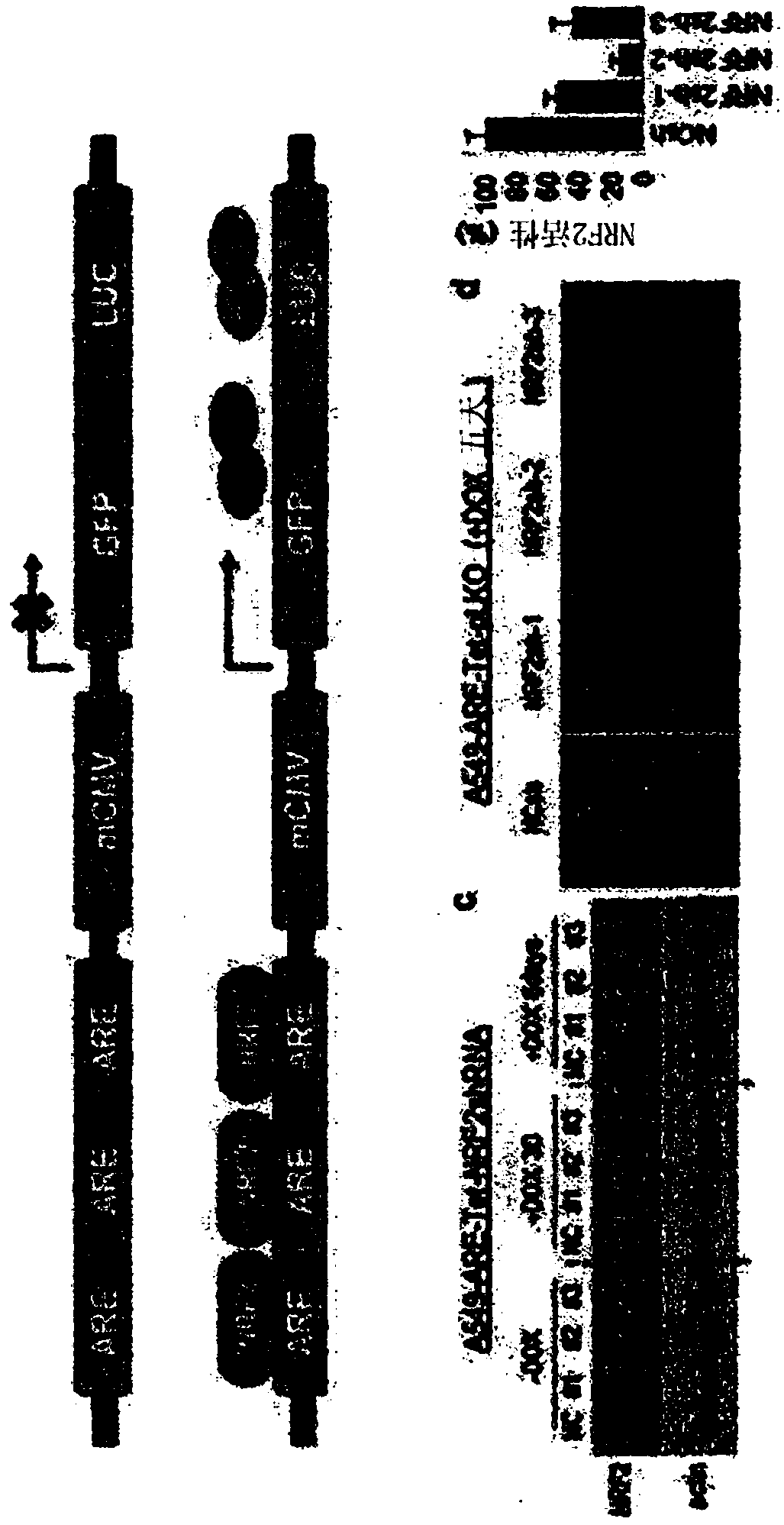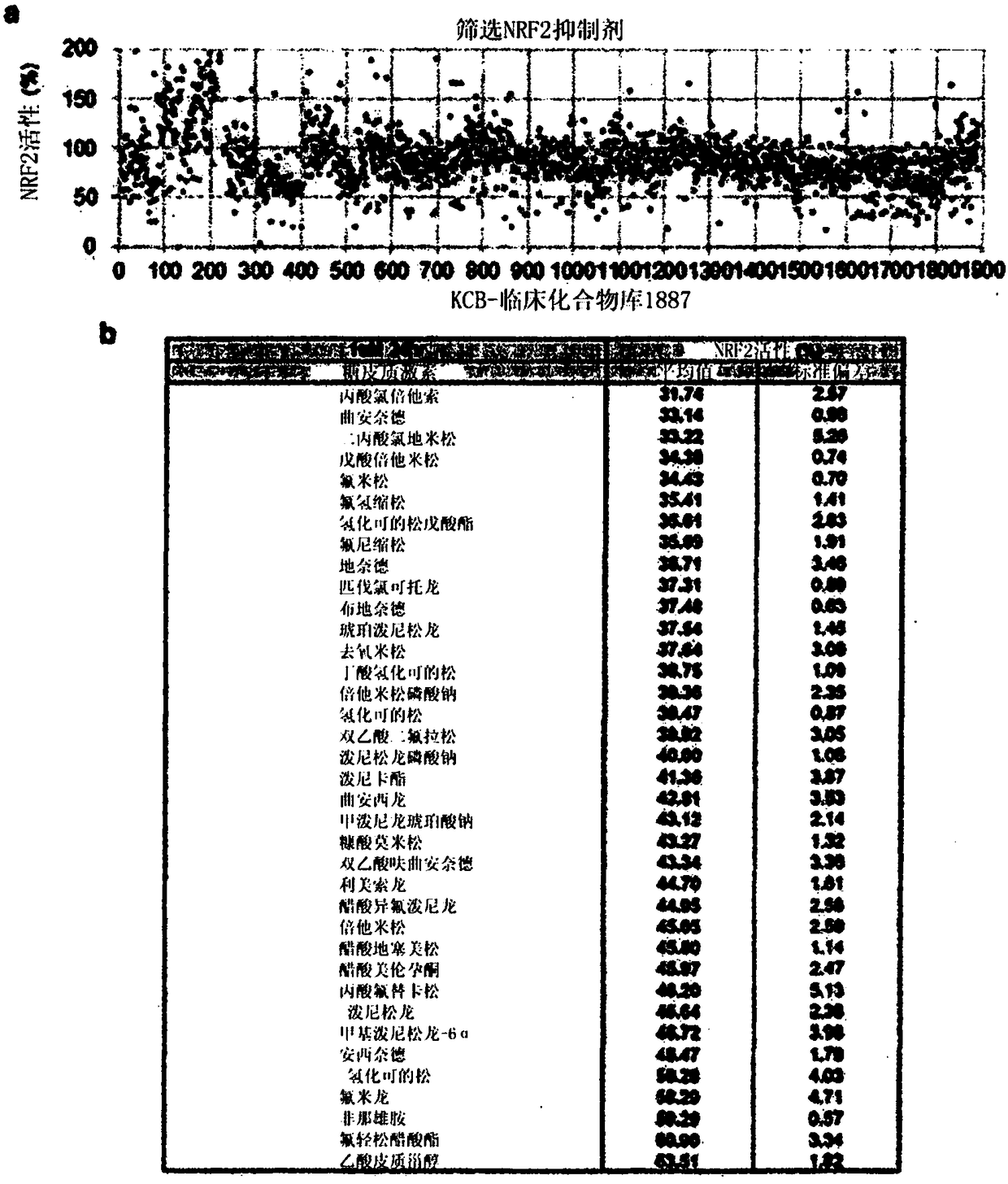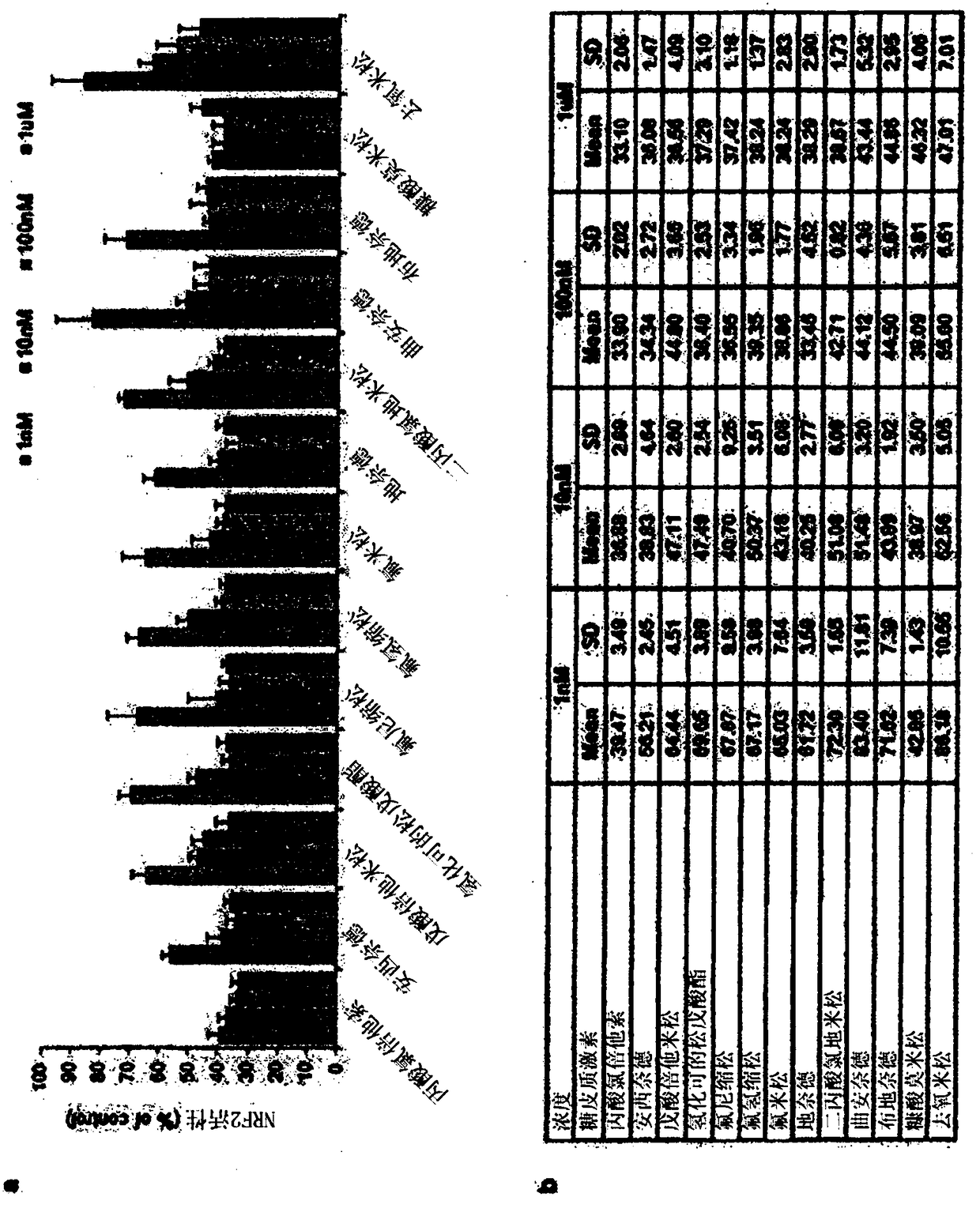Pharmaceutical composition for treatment of lung cancer comprising glucocorticoid-based compound
A technology of glucocorticoid and composition, which is applied in the field of composition for treating lung cancer, and can solve the problems that research has not yet been carried out in detail
- Summary
- Abstract
- Description
- Claims
- Application Information
AI Technical Summary
Problems solved by technology
Method used
Image
Examples
Embodiment 1
[0067] Screening of NRF2 inhibitors
[0068] (1) Establishment of ARE-luciferase cell line for measuring NRF2 activity
[0069] To screen for potent NRF2 inhibitors, such as figure 1 a shows that the luciferase / green fluorescent protein (GFP: green fluorescent protein) dual antioxidant response element (ARE) capable of monitoring NRF2 activity was established in A549 (LKB1 normal / KEAP1 mutant) non-small cell lung cancer cells with high NRF2 activity : antioxidant responsive element)-DNA base sequence (CACCGTGACTCAGCAATTx3) system (Luciferase / GFP dual ARE-receptor cell line system).
[0070] In order to prove that the luciferase and GFP signals that exhibit high activity in the A549 cell line are specific to NRF2 activity, three kinds of doxycyclin (doxycyclin) with mutually different sequences were prepared as shown in Table 1 below- Inducible NRF2-shRNA. To establish a Tet-inducible shRNA expression system, the following shRNAs were inserted into the tet-pLKO-pyro vector ...
Embodiment 2
[0102] Confirmation of NRF2 inhibition mechanism by clobetasol propionate
[0103] (1) Confirmation of the inhibitory mechanism of clobetasol propionate
[0104] Glucocorticoids act as ligands of nuclear receptor subfamily 3 (nuclear receptor subfamily 3. group C, member 1 ) well known as glucocorticoid receptors (GCreceptor, GCR). When glucocorticoids bind to GCR, GCR induces transcriptional promotion or transcriptional repression of various genes related to various functions in the body such as inflammation or metabolism. Based on these known facts, in order to confirm whether the NRF2 inhibitory effect of the glucocorticoid, clobetasol propionate (Clobetazole propionate) is related to GCR, after using GCR-shRNA to inhibit the expression of GCR, Western blotting and luciferase Determination.
[0105] After first establishing the transduced A549-tet-on cells with vectors including GCR-shRNA, they were treated with doxycycline and clobetasol propionate, and then to perform ...
Embodiment 3
[0122] Confirmation that the expression of NRF2 target protein and the increase of active oxygen are inhibited by clobetasol propionate
[0123] (1) Determination of NRF2 expression in lung cancer cell lines
[0124] It is known that NRF2 is generally expressed more in KEAP1 mutant cells, and protein kinase (p-AMPK) is less expressed in LKB1 mutant cells. To confirm this, immunoblotting was performed on four types of cells. Specifically, in order to verify that H2228 (KEAP1-mutated, LK1-normal), A549 (KEAP1-mutated, LKB1-mutated), H460 (KEAP1-mutated, LKB1-mutated) as KEAP1 mutant cells and H1299 as normal gene cells (KEAP1-normal, LKB1-normal) Whether KEAP1 and LKB1 are mutated, Western blotting is performed by the same method as that performed in Example 1 to confirm the expression levels of NRF2 and p-AMPK.
[0125] results, such as Image 6 As shown in a, due to the high expression of NRF2 in H2228, A549, and H460 cell lines, KEAP1 mutation was confirmed, and based on ...
PUM
 Login to View More
Login to View More Abstract
Description
Claims
Application Information
 Login to View More
Login to View More - R&D
- Intellectual Property
- Life Sciences
- Materials
- Tech Scout
- Unparalleled Data Quality
- Higher Quality Content
- 60% Fewer Hallucinations
Browse by: Latest US Patents, China's latest patents, Technical Efficacy Thesaurus, Application Domain, Technology Topic, Popular Technical Reports.
© 2025 PatSnap. All rights reserved.Legal|Privacy policy|Modern Slavery Act Transparency Statement|Sitemap|About US| Contact US: help@patsnap.com



